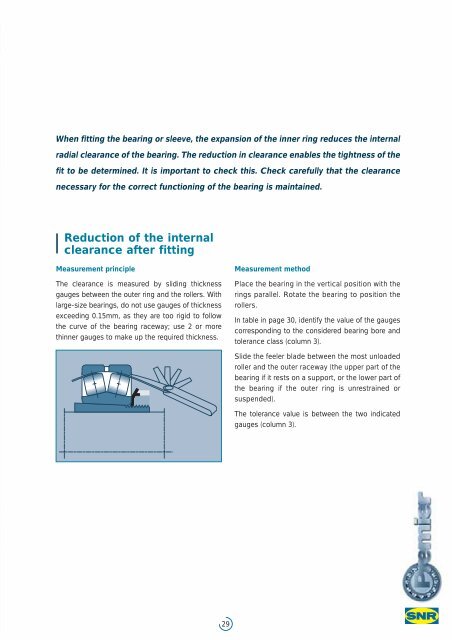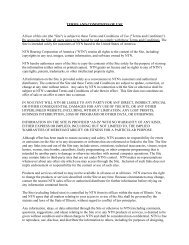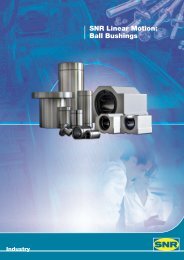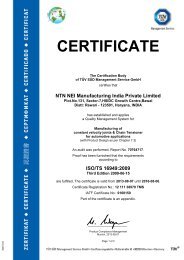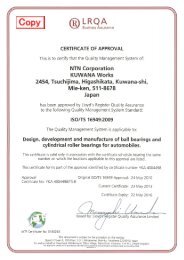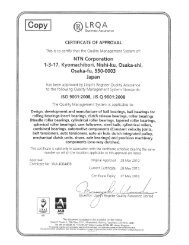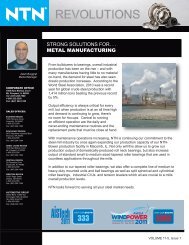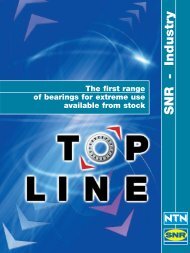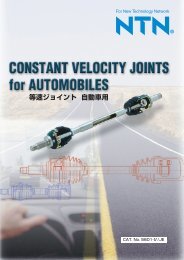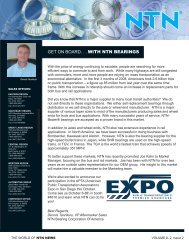Premier spherical roller bearings our vast experience
Premier spherical roller bearings: our vast experience - NTN Bearing
Premier spherical roller bearings: our vast experience - NTN Bearing
- No tags were found...
Create successful ePaper yourself
Turn your PDF publications into a flip-book with our unique Google optimized e-Paper software.
When fitting the bearing or sleeve, the expansion of the inner ring reduces the internal<br />
radial clearance of the bearing. The reduction in clearance enables the tightness of the<br />
fit to be determined. It is important to check this. Check carefully that the clearance<br />
necessary for the correct functioning of the bearing is maintained.<br />
Reduction of the internal<br />
clearance after fitting<br />
Measurement principle<br />
The clearance is measured by sliding thickness<br />
gauges between the outer ring and the <strong>roller</strong>s. With<br />
large-size <strong>bearings</strong>, do not use gauges of thickness<br />
exceeding 0.15mm, as they are too rigid to follow<br />
the curve of the bearing raceway; use 2 or more<br />
thinner gauges to make up the required thickness.<br />
Measurement method<br />
Place the bearing in the vertical position with the<br />
rings parallel. Rotate the bearing to position the<br />
<strong>roller</strong>s.<br />
In table in page 30, identify the value of the gauges<br />
corresponding to the considered bearing bore and<br />
tolerance class (column 3).<br />
Slide the feeler blade between the most unloaded<br />
<strong>roller</strong> and the outer raceway (the upper part of the<br />
bearing if it rests on a support, or the lower part of<br />
the bearing if the outer ring is unrestrained or<br />
suspended).<br />
The tolerance value is between the two indicated<br />
gauges (column 3).<br />
29


